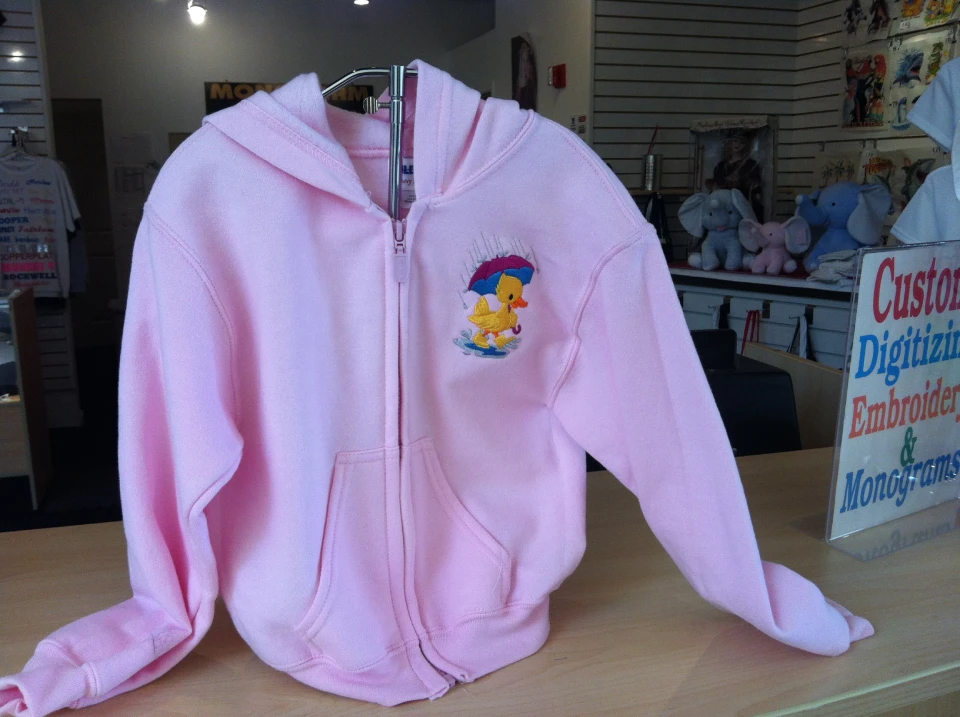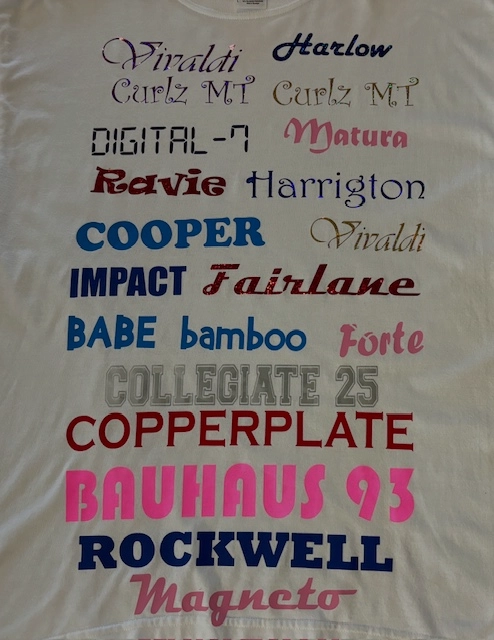The Art of Custom Needlework: Opening the Secrets to Creating Distinct and Remarkable Designs
Needlework, a craft soaked in tradition and creativity, holds within its detailed stitches the power to transform material right into a canvas of unique expression. The tricks to developing custom embroidery styles that astound the eye and leave a long lasting perception hinge on a delicate balance of method, creative thinking, and attention to detail. As we look into the globe of custom embroidery, we discover the nuanced interaction in between string selection, stitch complexity, and style customization that boosts a plain garment to a masterpiece. Join us on a journey with the art of custom-made needlework as we untangle the mysteries behind crafting truly memorable and unique creations.
Picking the Right Needlework Threads
When selecting needlework threads, what crucial aspects should you consider to ensure the finest results for your personalized styles? The selection of embroidery thread is critical in identifying the last result of your embroidered style.
In addition, the weight or thickness of the string plays a substantial role in the look of the needlework. Thicker threads can add measurement and texture to your design, while finer strings are ideal for elaborate information and tiny text. Furthermore, taking into consideration the shade fastness and washability of the thread is important to make certain that your custom styles preserve their top quality and vibrancy in time. By very carefully evaluating these aspects and picking high-quality threads that meet your particular demands, you can boost the visual charm and long life of your embroidered creations.
Discovering Various Stitch Strategies
To explore the world of 'Checking out Different Stitch Methods', one should understand the complexities and nuances that each stitching method brings to the art of needlework. Various stitch strategies not just add visual interest but additionally add to the general structure and measurement of the layout. One popular stitch strategy is the satin stitch, which entails very closely jam-packed parallel stitches to produce a smooth and shiny surface area, perfect for completing shapes and creating vibrant lays out.
On the various other hand, the backstitch is a flexible technique usually made use of for detailing and adding great information. It involves sewing in reverse to produce a solid line of needlework. Furthermore, the French knot stitch adds a responsive element to layouts, best for producing distinctive accents like blossom centers or attractive touches.
Checking out different stitch methods allows embroiderers to have fun with light, shadow, and depth within their designs, boosting the visual allure and imaginative top quality of their embroidery tasks. By grasping various stitching methods, one can open unlimited opportunities for producing one-of-a-kind and unforgettable custom needlework pieces.
Incorporating Personalized Style Elements
Having actually discovered the complexities of various stitch techniques such as the satin stitch, backstitch, and French knot, the emphasis currently shifts in the direction of integrating personalized layout aspects in custom-made additional resources needlework projects. Individualized layout elements play an important function in making needlework tasks truly unique and unforgettable.
One more method to include tailored layout elements is by including symbols or motifs that hold special meaning to the recipient or mirror their interests and personality. For instance, integrating a preferred flower, animal, or hobby-related sign can make the embroidery design much more significant and personalized. Furthermore, selecting colors that resonate with the recipient or align with the intended theme can better boost the customization of the needlework job.
Mastering the Art of Color Control

One secret facet of color coordination is comprehending color theory. This consists of recognizing just how various shades interact with each other, the emotions they convey, and exactly how they can be incorporated to develop aesthetically appealing designs. By applying color theory principles, embroiderers can create harmonious color palettes that enhance the overall look of the design.
Additionally, taking notice of contrast is crucial in color coordination. Utilizing contrasting shades can aid particular components of the layout pop, enhance clarity, and produce a visually dynamic embroidery item. By understanding the art of shade sychronisation, embroiderers can raise their designs and develop remarkable items that reverberate with clients and audiences alike.
Enhancing Texture With Advanced Needlework Stitches

French knots, for instance, are excellent site link for including tiny, elevated dots to your layout, resembling the appearance of grains or developing a distinctive surface area. Bullion knots, on the various other hand, can be utilized to produce twisted, ropelike aspects that add a glamorous feel to the embroidery. Seed stitching involves tiny, scattered stitches that can fill in locations with a polychromatic appearance, while turkey job produces fluffy, dimensional accents reminiscent of animal hair or vegetation. Trying out these sophisticated embroidery stitches allows you to press the borders of standard embroidery and create really unique and aesthetically attractive structures in your designs.
Final Thought
Finally, the art of custom needlework involves a mix of selecting the right strings, checking out numerous stitch methods, incorporating tailored style elements, grasping color control, and boosting texture with innovative stitches. By understanding and applying these essential elements, embroiderers can produce one-of-a-kind and unforgettable designs that showcase their creative thinking and skill. Needlework enthusiasts can open the secrets to producing beautiful and custom items that stand apart and leave a long-term perception.
Comments on “Custom-made Scrubs with Embroidery for a Specialist Appearance”